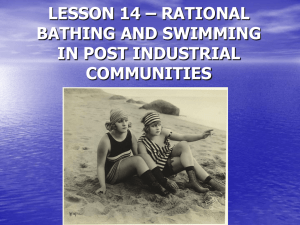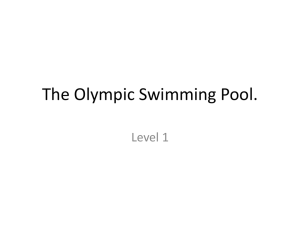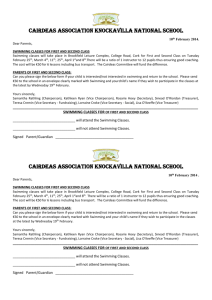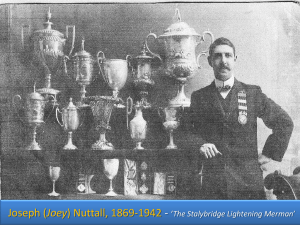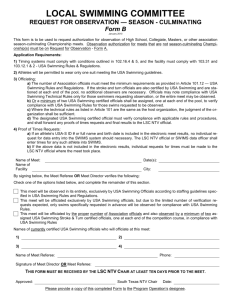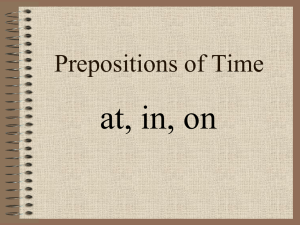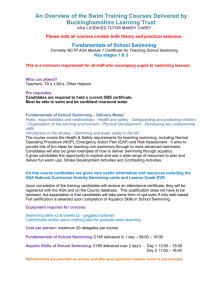Case Study 1swimming and bathing
advertisement
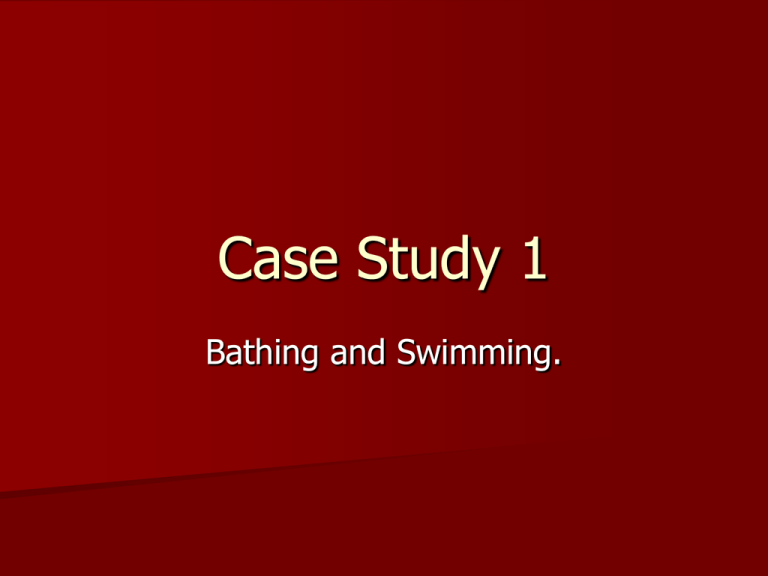
Case Study 1 Bathing and Swimming. Bathing and Swimming as a popular recreation. In the middle ages (1200 – 1500) Bathing for pleasure was common. The river provided a ready supply of food, a means of transport and a place to wash. Work, play and the river were so inter related it became a necessity to learn to swim for safety. Upper class would sponsor outstanding lower class swimmers to represent them in wager races. Charles II established a series of open air swimming contests in the Thames. 1784 first open air swimming baths built. Water meadows – areas of common land that had no trees or agriculture so provided large flat spaces for casual, informal games, athletic sports, horseracing and shooting. When flooded they became ideal for ice fairs and skating. Influence of the Public Schools. Early 19th century. Bathing in public schools was spontaneous, unorganised and centred around natural facilities eg rivers and ponds. No supervision. Late 19th century – Athleticism developed became more structured and regulated. Natural facilities developed into major bathing facilities with changing huts, diving boards, instructors and competitions. Headmasters regarded swimming as a safe and hygienic pursuit. ( copy table 4 pg 54 ) Bathing and swimming as rational recreations. The water cure – popular in Bath and Cheltenham – resorts for the well-to-do. Mid 19th century newly emerged middle class took over the inland spas and chose them as sites for their schools. eg, Clifton and Cheltenham. Gentry moved to continental spas and the seaside. Beaches socially exclusive and single sexed for modesty. By 1870 new rail links brought the working class to the seaside. River towns – floating baths were built ( two platforms at right angles to the bank with a chain across the open end) Organised competitive events with the formation of clubs and swimming festivals. URBAN INDUSTRIAL TOWNS. Industrialisation led to disease and overcrowding. The first Public Health Act 18478 and the building of public baths sought to reduce problems. The first public baths to be opened were in Liverpool in 1828. Public baths had first class facilities for the middle class (plunge pools facilitated the development of indoor amateur swimming clubs) and second class facilities for the working class where they could wash their clothes. 1869 various middle class swimming clubs met to establish laws for amateur swimming. 1874 renamed Amateur Swimming Association of Great Britain. 1884 Amateur Swimming Association. By 1902 over 500 clubs were members. Swimming Today. Activity. Draw a table Highlighting the key factors for participation in swimming today. How many Swimming pools are in your local area? When were they built? Do they have a swimming club? FINISH FOR HOMEWORK

